The Paris Air show is the world’s oldest and largest aeronautics trade convention. This year’s 54th edition hosted an estimated 3,450 journalists, 180,000 general visitors, and 142,000 professionals who inked over $140-billion worth of contracts, all in just five days.
I carried a roll full of pilots watches to the show in order to investigate the intersection of industrial design and the aeronautics industries, but after three scorched days of slipping through military-grade bureaucracies and, eventually, onto the planes I believed held my story, it became obvious that any substantive material relationship between planes and watches was largely long gone. However, now unbound by military specifications, watchmakers are free to create all sorts of compelling pilots watches that range from accurate recreations of historical references to dreamy luxury items.
Almost all modern pilots watches are meant for civilians. I asked over a dozen commercial and military pilots if they were issued watches, and every one of them politely smirked at what must have sounded like a naive question. When I posed this question to a US Air Force AH-64 Apache chopper pilot — an outgoing man in his 30s sporting full fatigues and polarized Oakley Blades who had logged over 2,000 hours of active duty flying in Afghanistan and Iraq — his response told me that I was bordering on disrespect. I might as well have asked him why he wasn’t wearing a shearling-lined bomber jacket and RayBan Aviators. Best not to romanticize these brave people and the life-and-death missions they carry out.
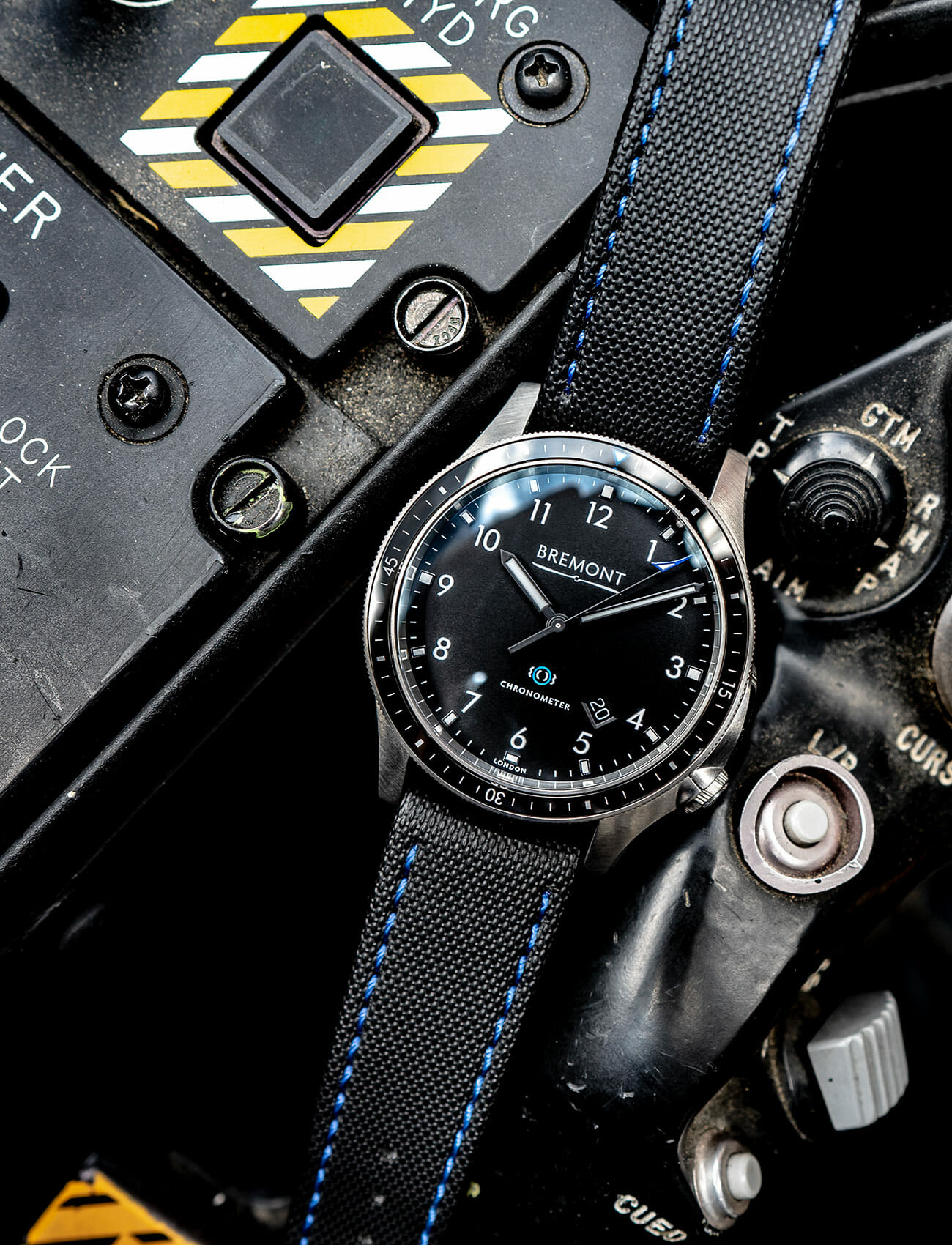
At one time, pilots required rugged and precise watches to fly, and many companies made both mil-spec pilots watches and cockpit instruments. But all that had died off by the mid-1980s as electronic navigation systems became the norm. What’s left of the relationship between horology and aeronautics today is a mutual nostalgic fascination with their former interdependence. For the mechanical watch industry, this fascination manifests itself as a celebration of an era when watches were cutting edge tools deployed in the world’s most important struggles toward modernity.
But only a fool would confuse a jewel for a tool, and it’s best to accept today’s pilot watches for what they are: incredibly rugged pieces of high-precision mechanical jewelry. (We could say the same of any modern tool watch category.) Of course, creating a great pilots watch today involves avant-garde materials and mechanical processes, but all that technology ultimately serves aesthetic ends.
Perhaps the greatest challenge for a designer is to create a pilots watch that carries the aesthetic of a specific plane or aeronautics company. This challenge involves exploring aeronautic symbols on a tiny scale. These symbols can range from suggestive combinations of colors and materials (Bremont excels at this) to imitating cockpit instruments (Bell & Ross’ stock in trade), and direct recreations of aviation branding symbols on the watch (Breitling has popularized these cross-brand collaborations).

To get a real-world sense of how this design brief has worked out for a few watch companies, I took pilots watches from IWC, Bremont, and TOCKr inside the planes that inspired these timepieces and simply looked to see if I could detect a genuine aesthetic resonance. The value of this method — which I’ve only half-jokingly dubbed “phenomenological investigation” — lies in being able to go beyond the allure of overly doctored photos and hyperbolic marketing prose toward what I hope is a more authentic look-see.
Alas, the vintage Supermarine Spitfire plane I was meant to climb into with the IWC Spitfire Perpetual Calendar in Bronze never showed up. No one in the various offices of the Paris Air Show knew where the plane had gone to, but I persisted until, finally, a teenage girl smacking gum at one of the public info booths told me she thought there was one “dans le Musee d l’Air et de l’Espace,” about 100 feet from where I stood. Voila! While I was neither able to get inside the Spitfire nor see it fly, I brushed an alarming accumulation of dust off the wing and gently placed the IWC Big Pilot’s Watch Perpetual Calendar Spitfire Edition in Bronze on it for a look. I’m happy to report that IWC beautifully captured the vibe of this British WWII plane.
Admittedly, IWC doesn’t appear to have provided watches to the British military during WWII when Spitfires dominated European skies, and further, the Spitfire editions are largely new colorsways of models that already existed within the IWC line. However, the Perpetual Calendar is a thing of beauty in and of itself, and thoroughly succeeds in celebrating the Spitfire.
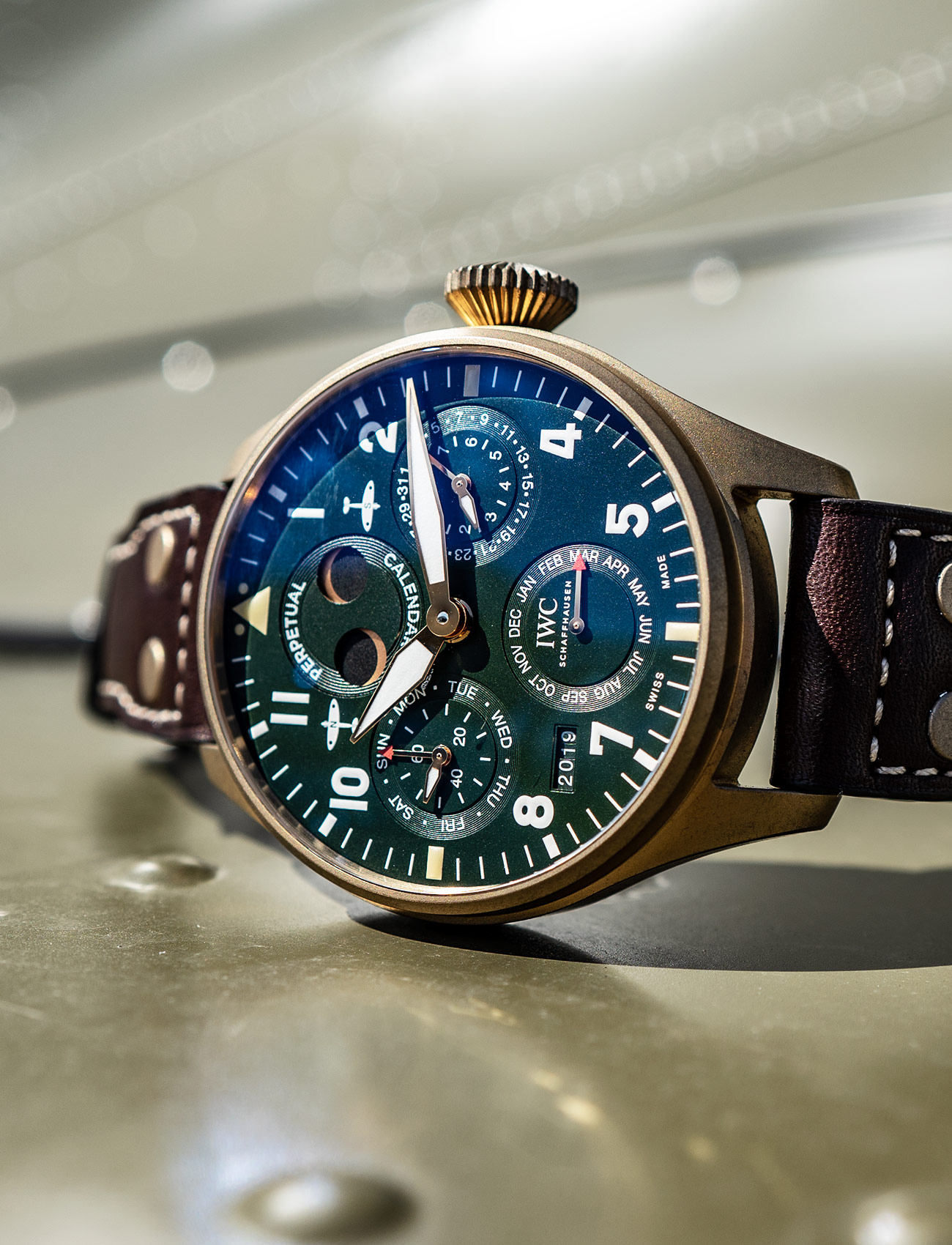
At 46.2mm across with only a slight bezel, the khaki-green dial’s eight individual displays emulate a cockpit dashboard without succumbing to perfunctory imitations of those instruments. With 386 individual pieces, 54 jewels, and a seven-day power reserve, the movement harkens back to a time when complex and precise mechanical devices were decisive in winning and losing world-shaping wars. This watch photographs well, but it needs to be seen in person to appreciate its unsurpassed refinement and wearability.
TOCKr Watches of Austin Texas may have had it easier than IWC because the TOCKr C-47 D-Day watch houses a dial made from metal remnants of the Douglass Aircraft C47 Skytrain that led the paratrooper invasion of Normandy, named “That’s All Brother.” After completion of a recent multi-million dollar restoration, this plane flew back to Normandy and dropped paratroopers above the heads of countless celebrants, including the Presidents of the USA and France. After that display flight, “That’s All Brother” flew along with its sister aircraft, called “D-Day Doll,” to the Paris Air Show for more displays.
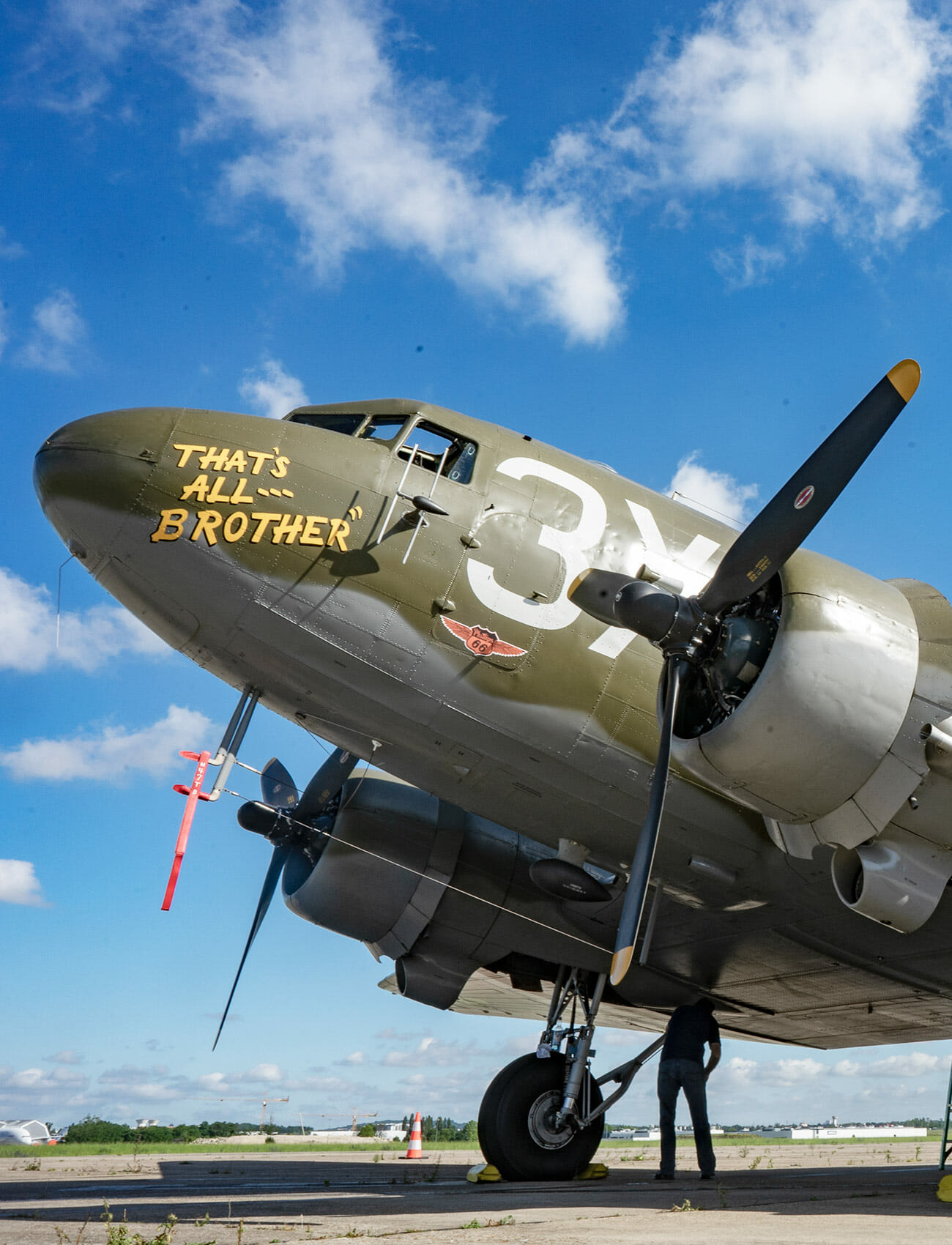
Accessing the plane “That’s All Brother” on the “hot ramp” (i.e. out among the planes prepping for demonstration flights) proved quite challenging. For days I pleaded in broken French with the various offices of the Paris Air Show, and finally a team of leary security folks took my passport and assigned me a personal security detail who escorted me onto the hot ramp. Walking that half-mile of heat-blurred tarmac was unforgettable. At one point I was 50 yards from the launch of a late-generation F-35 fighter jet, which proceeded to defy gravity and logic in a deafening display flight.
I had the Limited Edition C-47 D-Day Alfred Pepper Bronze model with me on the hot ramp, and once I was finally on board “That’s All Brother,” it moved me to know that the watch in my hand held metal that flew as part of that plane into Nazi territory in Normandy on June 6th, 1945. To say that TOCKr’s C-47 D-Day watch resonated with the plane is an understatement; it is literally made from the same stuff, and anyone lucky enough to snatch up one of these lovely timepieces would likely sense its significance.
In a different take on the pilots watch, Bremont Watches collaborated with Boeing to develop an exclusive line of timepieces that capture the Boeing vibe in both materials and symbols. The case of the 42mm Bremont Boeing Model 1 is made of Custom 465® Stainless Steel, a double vacuum-melted alloy developed for the aerospace industry and used in the undercarriages of Boeing F-18s and 747 Jumbo Jets.
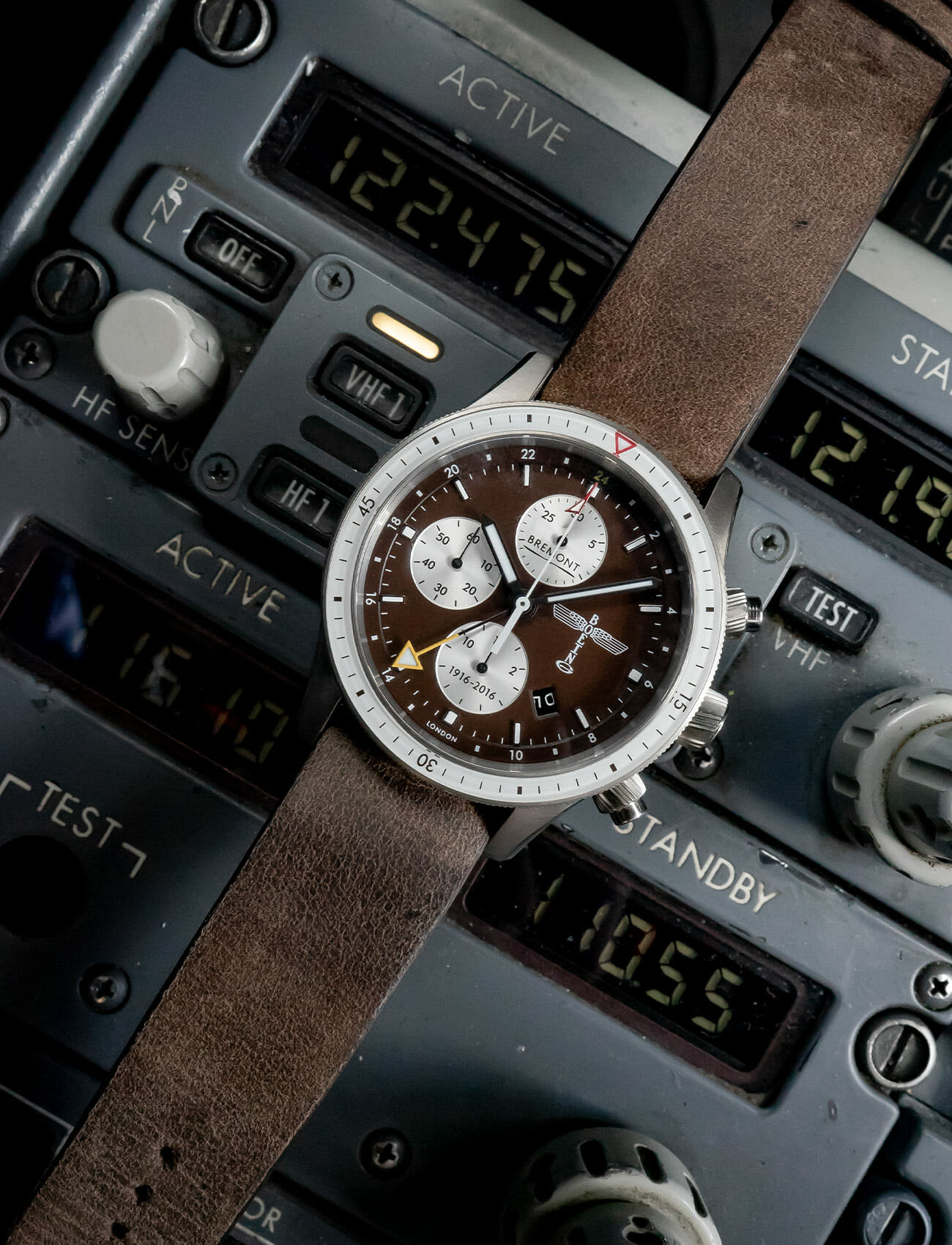
The Boeing 100 GMT Chronograph, limited to 300 pieces, is manufactured from Boeing aviation-grade Ti 6-4 titanium, a special metal that girds airframes and engine components throughout the aerospace industry. There is also a bit of proprietary carbon fiber composite from the Boeing Dreamliner flying testbed aircraft, ZA004, integrated into the Boeing 100’s crown. Like the TOCKr watch, these Bremonts are also made of real airplane stuff, and the material connections are similarly compelling.
Beyond these materials, the Bremont Boeing models capture the aeronautic company’s branding through colors and tasteful use of Boeing logos, old and new. The vintage looks of the 100 GMT Chronograph are due to the “Boeing Brown” dial, a cockpit color intended to reduce stress for pilots. The eggshell finish of the brown dial replicates the Bakelite used in Boeing’s vintage cockpits (though I wasn’t able to confirm the accuracy of the match firsthand). That dial also features an older Boeing logo that sets this timepiece squarely in the mid-20th Century.
The Bremont Boeing Model 1 takes a broad-stroke approach to the modern Boeing brand. This watch’s subtlety encapsulates the image Boeing projects today: a quiet assurance of unparalleled quality. While neither of these Bremont Boeing watches really resonated visually with the planes I took them onto — a converted 737 freighter, the aforementioned Apache AH-64 chopper, an F-15 Strike Eagle, and a CH-47 Chinook chopper — the Model 1 resonated with Boeing’s understated messaging in a big way. This understatement turns out to be rather fascinating.
Branding within the aerospace industry appears pretty tepid on the surface. However, because as many as 20,000 planes full of humans are in flight worldwide at any given moment, you’d be a moderately dishonest human being to try to sell aeronautic products through rhetoric and hype. Whether the marketeers are pushing a tiny rubber gasket made in East Bumblefuck or an entire airplane assembled in a high-tech Boeing assembly hangar, the branding codes are perfunctory (“Boeing: Building the Future Together;” “Oceta: We Connect Your System;” “Dupont Dedienne Multiplasturgy Group: Metal to Plastic Solutions” etc.).
Perhaps now we can better see how the reserved Bremont Boeing Model 1 so fully captures Boeing’s intentional understatement, and to some degree that of the whole aeronautics industry. Though air travel has grown to become commonplace, our sense of wonder about flying is right there beneath the surface. Understandably, that wonder often presents itself as an undercurrent of fear.
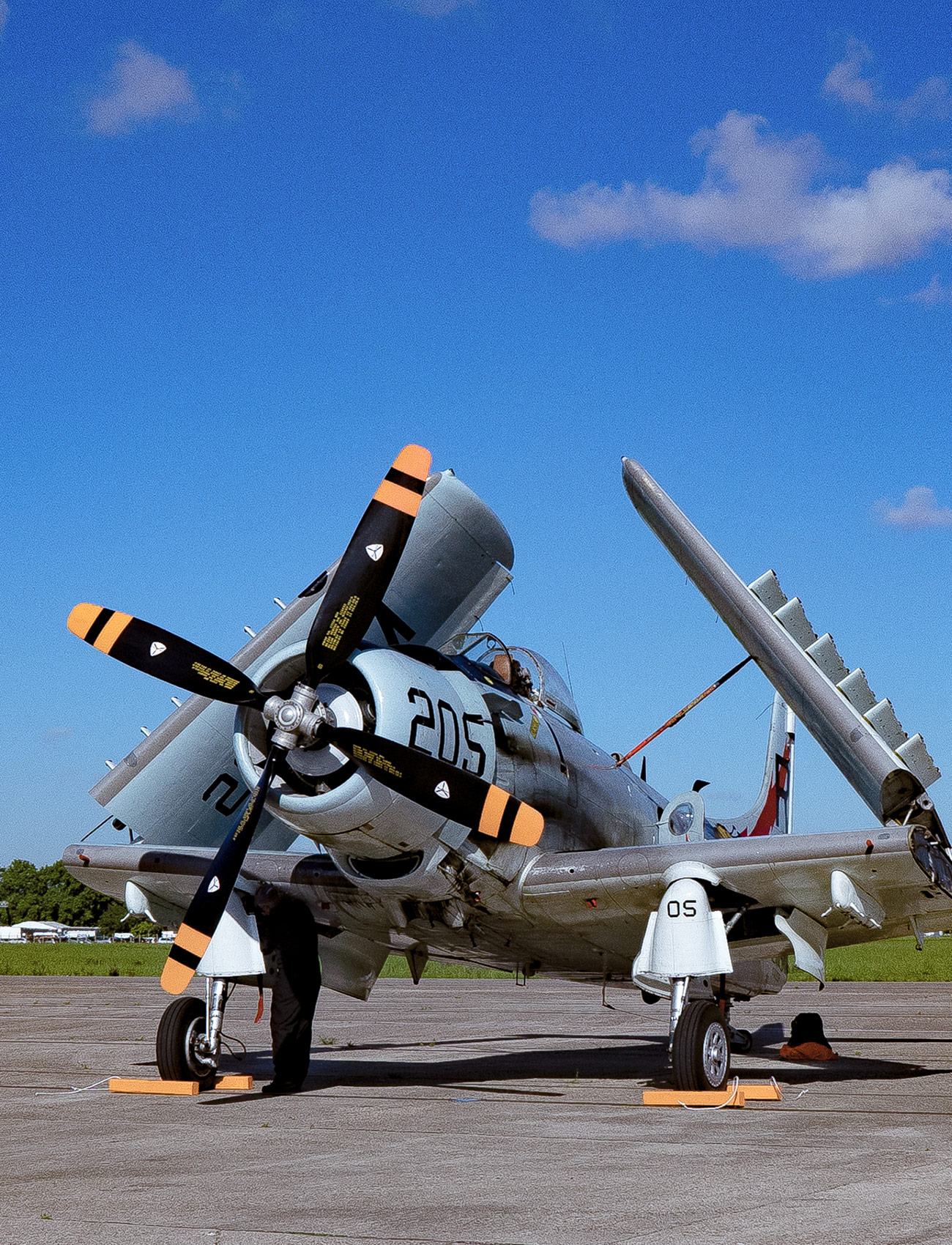
If we take a moment to consider what it is to step into a modern jet, there’s plenty of reasons to be afraid, and plenty of reasons to celebrate. Flying can serve up a potent emotional concoction, and behind it are thousands of aeronautics companies quietly providing us safe travels.
Yet, you likely know the names Boeing, Cessna, Lockheed Martin, AirBus, and Douglas Aircraft. Our awareness of these companies stems in part from the safety cards we never read, the ones slotted between the barf-bag and the Duty Free catalog. Sartre himself couldn’t have penned a more dire existentialist trilogy: “you might vomit; you might enjoy some luxury goods; you might die.” We turn from these safety cards as we turn from death, but the aircraft company’s italicized text logo is always there, 3mm from our knees, reminding us that we’ve irrevocably trusted them with our lives.
No need to push the point. The roaring engines say more than enough. And today’s watchmakers have chimed in. Free of the technical responsibilities they once shouldered, watchmakers like Bremont, TOCKr and IWC inhabit of a new arena of horological creativity that celebrates the incredible human ingenuity that goes into offering safe, high-speed world travel — even if watches themselves are no longer an integral part of those journeys.

